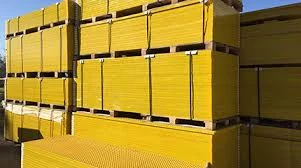
-
 Afrikaans
Afrikaans -
 Albanian
Albanian -
 Amharic
Amharic -
 Arabic
Arabic -
 Armenian
Armenian -
 Azerbaijani
Azerbaijani -
 Basque
Basque -
 Belarusian
Belarusian -
 Bengali
Bengali -
 Bosnian
Bosnian -
 Bulgarian
Bulgarian -
 Catalan
Catalan -
 Cebuano
Cebuano -
 China
China -
 China (Taiwan)
China (Taiwan) -
 Corsican
Corsican -
 Croatian
Croatian -
 Czech
Czech -
 Danish
Danish -
 Dutch
Dutch -
 English
English -
 Esperanto
Esperanto -
 Estonian
Estonian -
 Finnish
Finnish -
 French
French -
 Frisian
Frisian -
 Galician
Galician -
 Georgian
Georgian -
 German
German -
 Greek
Greek -
 Gujarati
Gujarati -
 Haitian Creole
Haitian Creole -
 hausa
hausa -
 hawaiian
hawaiian -
 Hebrew
Hebrew -
 Hindi
Hindi -
 Miao
Miao -
 Hungarian
Hungarian -
 Icelandic
Icelandic -
 igbo
igbo -
 Indonesian
Indonesian -
 irish
irish -
 Italian
Italian -
 Japanese
Japanese -
 Javanese
Javanese -
 Kannada
Kannada -
 kazakh
kazakh -
 Khmer
Khmer -
 Rwandese
Rwandese -
 Korean
Korean -
 Kurdish
Kurdish -
 Kyrgyz
Kyrgyz -
 Lao
Lao -
 Latin
Latin -
 Latvian
Latvian -
 Lithuanian
Lithuanian -
 Luxembourgish
Luxembourgish -
 Macedonian
Macedonian -
 Malgashi
Malgashi -
 Malay
Malay -
 Malayalam
Malayalam -
 Maltese
Maltese -
 Maori
Maori -
 Marathi
Marathi -
 Mongolian
Mongolian -
 Myanmar
Myanmar -
 Nepali
Nepali -
 Norwegian
Norwegian -
 Norwegian
Norwegian -
 Occitan
Occitan -
 Pashto
Pashto -
 Persian
Persian -
 Polish
Polish -
 Portuguese
Portuguese -
 Punjabi
Punjabi -
 Romanian
Romanian -
 Russian
Russian -
 Samoan
Samoan -
 Scottish Gaelic
Scottish Gaelic -
 Serbian
Serbian -
 Sesotho
Sesotho -
 Shona
Shona -
 Sindhi
Sindhi -
 Sinhala
Sinhala -
 Slovak
Slovak -
 Slovenian
Slovenian -
 Somali
Somali -
 Spanish
Spanish -
 Sundanese
Sundanese -
 Swahili
Swahili -
 Swedish
Swedish -
 Tagalog
Tagalog -
 Tajik
Tajik -
 Tamil
Tamil -
 Tatar
Tatar -
 Telugu
Telugu -
 Thai
Thai -
 Turkish
Turkish -
 Turkmen
Turkmen -
 Ukrainian
Ukrainian -
 Urdu
Urdu -
 Uighur
Uighur -
 Uzbek
Uzbek -
 Vietnamese
Vietnamese -
 Welsh
Welsh -
 Bantu
Bantu -
 Yiddish
Yiddish -
 Yoruba
Yoruba -
 Zulu
Zulu
FRP Flange and Blind Applications for Enhanced Structural Integrity and Performance
FRP Flange and Blind A Comprehensive Overview
In the realm of industrial applications, the use of Fiber Reinforced Polymer (FRP) materials has gained considerable attention. This is particularly true for components such as flanges and blinds that are essential in various piping and structural systems. Understanding their characteristics, benefits, and applications can illuminate their pivotal role in modern engineering designs.
What is FRP?
Fiber Reinforced Polymer (FRP) is a composite material made of a polymer matrix reinforced with fibers. Commonly used fibers include glass, carbon, and aramid, each providing unique properties suited for different applications. The polymer components typically include epoxy, polyester, or vinyl ester resins. The combination of these materials results in a product that is lightweight yet incredibly strong, corrosion-resistant, and durable, which is critical for applications in harsh environments.
FRP Flanges Structure and Functionality
FRP flanges are crucial components utilized in the assembly of piping systems. They serve as connection points that facilitate the joining of two sections of pipe or equipment. FRP flanges are manufactured using various methods, including hand lay-up, filament winding, and resin transfer molding, allowing for customization in terms of shape, size, and mechanical properties.
One of the most significant advantages of FRP flanges is their resistance to corrosion. Unlike traditional steel flanges, which can be prone to rust and degradation in corrosive environments, FRP flanges maintain their integrity. This feature is particularly beneficial in industries such as chemical processing, wastewater treatment, and marine applications, where exposure to aggressive substances is common.
Moreover, FRP flanges offer excellent thermal insulation properties, reducing the loss of heat in thermal systems. Their lightweight nature simplifies installation and reduces the load on supporting structures, enhancing overall system efficiency.
frp flange and blind

FRP Blinds Ensuring Safety and Integrity
FRP blinds play a critical role in ensuring the safety and operational integrity of piping systems. A blind is a solid plate that covers the flange to prevent the flow of fluid, effectively sealing off a section of the pipeline for maintenance or decommissioning. The use of FRP material in blinds offers the same advantages seen in flanges, including corrosion resistance and lightweight properties.
The design of FRP blinds can also be tailored to specific operational needs, including varying pressure ratings and sizes. Their ease of handling and installation further contribute to their practicality, allowing for swift responses in maintenance scenarios, thus minimizing downtime and ensuring safety in operation.
Applications and Advantages
The applications for FRP flanges and blinds are vast and diverse. Industries that benefit from these components include oil and gas, chemical processing, power generation, pulp and paper, and water treatment, among others. The unique properties of FRP lead to reduced maintenance costs, fewer replacements, and extended lifecycle for both the flanges and blinds.
Environmental sustainability is another crucial consideration. In an age where industries are increasingly focusing on reducing their ecological footprint, FRP materials can offer a solution. Their longevity and resistance to various elements minimize waste generated from replacements, contributing to sustainable industrial practices.
Conclusion
In summary, FRP flanges and blinds represent a significant advancement in material science, offering substantial benefits over traditional materials. Their corrosion resistance, lightweight nature, and durability make them indispensable in modern industrial applications. As industries continue to evolve and demand more efficient and sustainable solutions, the reliance on innovative materials like FRP is set to grow, affirming the importance of understanding and utilizing these components in engineering and maintenance practices.









